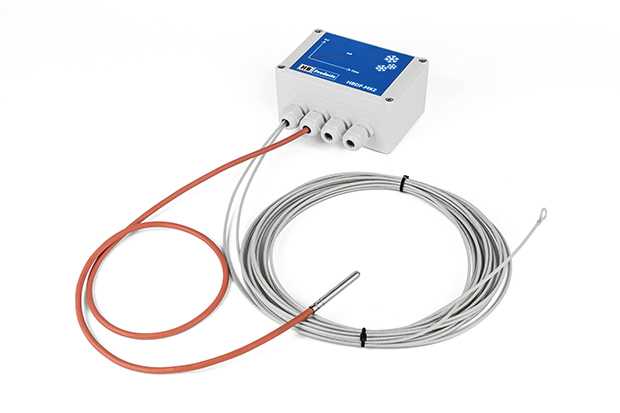Energy Efficient Refrigeration
New Technologies for reduced Energy Consumption
In the refrigeration industry there are large potentials in reducing energy consumption if the right technology is used. Especially the evaporation process can be improved by reducing superheat and making sure the evaporator is free from ice.
Many contractors are focused on documented reliability therefore they are not eager to try new technology. Few customers put pressure on the contractors to reduce the energy consumption and the focus remain on proven but inefficient technology.
The potential of energy efficient technology is not visible on the market for two reasons:
- The contractors do not focus on and promote this new technology because their benefit is limited, and they need to invest in developing their technical skills and knowhow.
- The customers who have invested in this technology wants to keep the information and good business case to themselves because of the competition.
We have two technologies which both are patented, and which helps to reduce the energy consumption in the refrigeration and heat pump industry.

Vapor Quality Control
To achieve the best energy efficiency, it is crucial to have optimal control of the evaporator. With a Vapor Quality Sensor it is possible to make a low charge system with a significantly reduction in energy consumption. From a cold store build in the summer 2020 we have this convincing chart which show a reduction in energy consumption by 43 %.
The energy savings are a competitive advantage
The energy savings achieved by Vapor Quality Control are so significant that it is a competitive advantage and therefore the cold store owners are reluctant to show their facilities and share their economic benefits with the competitors.
Reference list with 30 projects
Despite the challenges we have managed to collect a list of 30 projects around the world where the benefits can be proven. Most of the plants are installed in Australia where Scantec Refrigeration successfully have implemented around 20 systems over the last 5 years. Today these cold stores reach an annual specific energy consumption down to 15 kWh/m3. Typical values are above 30 kWh/m3 even for new installations.
The bar chart shows the total electrical consumption for a refrigeration system in Halchiu, Romania day by day for September 2020. Until the 16th it was operated with superheat control. After the 19th superheat was replaced by Vapor Quality Control.
What is Vapor Quality Control?
Vapor Quality Control is a new patented control system for direct expansion systems based on an actual measurement instead of a calculation of superheat. This system increases efficiency significantly especially when the system operates in part load.
HB Products manufactures the Vapor Quality Sensors and sell to contractors who design refrigeration systems tailored to Vapor Quality Control.
Read More About Reduction of Energy Consumption Using Vapor Quality Control Sensor
Vapor Quality Control Sensor Brochure
Defrost control
Normally defrosting of evaporators are done based on timers or estimated ice layers. These solutions often lead to increased energy consumption for two reasons.
- If the ice layer on the evaporator is more than 2 mm the evaporation process is significantly reduced, and this leads to increased energy consumption coming from a larger pressure drop in the evaporator.
- If the evaporator is defrosted too often significant amounts of energy is added to the cold room for no reason and this leads to increased energy consumption.
A simple way to reduce the energy consumption is to measure the ice thickness on the evaporators and control the defrosting based on this measurement.
The sensor consists of an electronic box which can be installed on the evaporator down to -60°C and 5-10 m steel wire which is placed between the fins on the evaporator. The sensor is then able to measure the ice layer between the wire and the fins. The sensor output is an analog signal which is connected to the PLC and enables it to do more optimal defrosting.
A typical energy saving is 10 %, but it can be significantly higher if the existing solution have not been optimized.

Defrost Sensor Brochure

Vapor Quality Sensor
Replace super heat control with Vapor Quality Control and increase energy efficiency

Defrost on Demand Sensor
Measures the ice thickness on the evaporators and controls the defrosting






